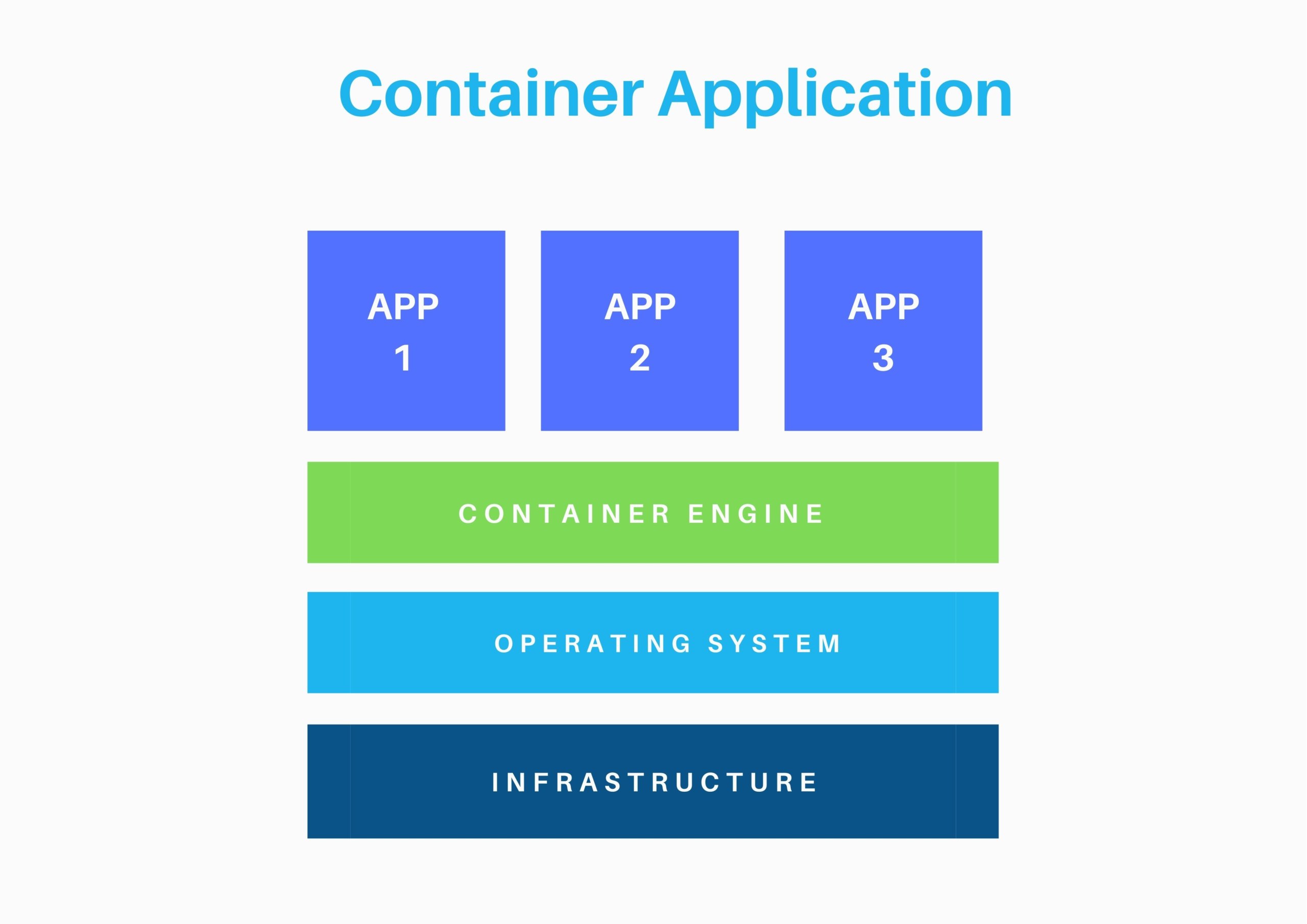
Imagine a cargo ship carrying shipping containers of various sizes all holding code of executable software. In the software world, these would be known as containers; the idea is this “cargo ship” carries the software containers moving from one computing environment to another. Containers are a great way to transfer software components easily since they’re small and portable.
What are Containers?
Containers are units of software that contain executable application code. The purpose of containers is to downsize software in a way to be built, shipped, deployed and scaled with ease. When comparing containers to traditional software applications there is a notable difference. Traditional software takes time to install and requires numerous commands. With containers, everything is packaged, so you just move it and run a single command that automatically installs everything.
In order to have containers run, you need a container engine such as the ones below.
- Kubernetes
Originally designed by Google, Kubernetes is an open-source system platform for container application deployment and management.
- Docker
A platform–as–a–service tool, Docker allows developers to build application-based containers.
Note that Kubernetes and Docker are complementary to each other. Kubernetes helps to enhance the application to be more robust with a stronger infrastructure as well as bringing scalability to the application, while Docker simplifies the process of building, running and managing container applications.
Containers and Virtual Machines
Virtual machines tend to be thought of as a virtual environment functioning as a self-contained operating system. Commonly, they run on a desktop window and behave as if they are their own computer. Virtual machines are a way to run applications in a safe environment. In comparison, containers don’t have a full operating system — they load the kernel (or virtualize) of the OS to hold an application.
Imagine using one device to run different application containers without having to switch to a different OS as the graphic below depicts.

IBM Applications That Are Containerized
IBM primarily runs on Kubernetes as their container engine. Cloud Pak for Automation (CP4A) is built to run containers for various applications within IBM’s software suite.
IBM Content Platform Engine
Part of IBM FileNet P8, IBM Content Platform Engine handles enterprise-wide workflow objects, custom objects as well as documents.
IBM Content Navigator
IBM Content Navigator is a web client platform for users to manage and work on content from different content servers.
IBM Business Automation Workflow
Part of the IBM Digital Business Automation (DBA) Platform and Cloud Pak for Automation, IBM Business Automation Workflow (BAW) automates workflows with the goal of optimizing business processes.
IBM Business Automation Content Analyzer
IBM Business Automation Content Analyzer is a cloud-based API web service that uses artificial intelligence to assist in data extraction and classification from documents.
IBM Business Automation Insights
Used with IBM Digital Business Automation Platform, IBM Business Automation Insights provides insight into events orchestrated by DBA for knowledge works and business owners, which can then be fed into a data lake for artificial Intelligence.
IBM Automation Workstream Services
A no-code business productivity tool, the IBM Automation Workstream Services streamlines, automates and expedites daily work activities.
IBM Business Automation Studio
Created for IBM Cloud Pak for Automation in mind, the IBM Business Automation Studio is a development and single authoring environment.
IBM Application Designer
IBM Application Designer is a low-code building tool to create and modify automation-based applications within CP4A.
Digital Worker
Digital Worker is an AI solution to build, manage, and control business operations for your digital workforce with the purpose of allowing human workers to prioritize high-value work.
Why Use IBM Containers?
- Simplicity
There’s no need to install a full OS since containers contain the OS components to run.
- Small and Portable
Containers carry everything they need with them, so they can be written and raun without configuration hiccups on different devices or environments.
- Fast to Run
Additionally, containers tend to start faster and are easier to update and maintain than traditional components, since they’re specifically built to run individual applications.
- Easily Monitored
Using IBM’s approach, containers are managed centrally through Kubernetes. Monitoring and alerting can be integrated through the underlying infrastructure, allowing for comprehensive system health awareness.
- Better in Testing Environments
Standing up in testing environments is significantly faster, almost like using a cookie cutter, since installation can be scripted. - Scalable
By running only currently used containers, resources are exclusively devoted to what is intended to run using less overhead.
Containers for your Enterprise
With containers, you’re able to better streamline the process of your IBM applications deployment. If you’re looking to move to containers, we can help. We’re able to design and support a containerized solution for faster software release and enabling multi-environment locations whether on-premise or in the cloud. If you have questions about IBM containers or containers in general, be sure to check out our automation forum.
